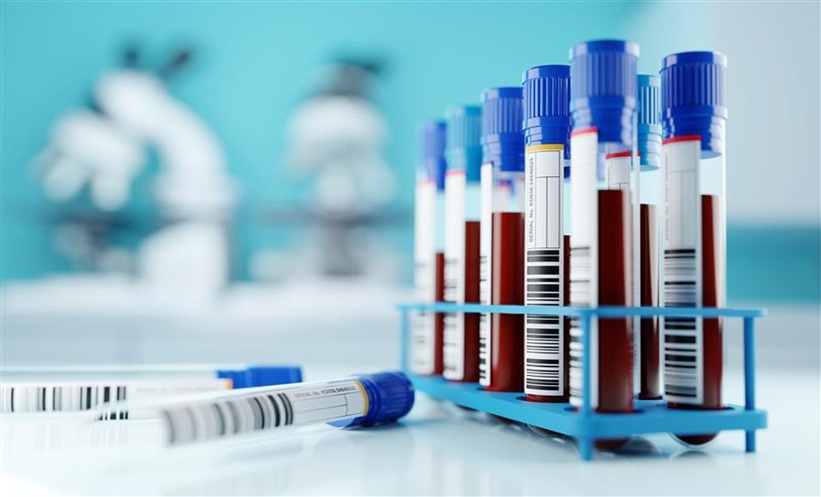Written by Rachel Donnison | Editorial Assistant, EMJ![]()
Fluorescence-guided imaging has been on the rise for many years now, but several barriers remain to its widespread application. Once these are overcome, all the evidence is showing that the technique will be a big success. Specifically in gastroenterology surgery, reduced anastomotic leak rates, a favourable outcome, has been observed in several studies and the data collated in systematic reviews. Leading world experts in colorectal surgery and fluorescence imaging gathered at the International Colorectal Disease Symposium to share their experiences, opinions, and advice on this developing specialty.
THE RISE OF FLUORESCENCE IMAGING
Originally developed during the Second World War as a dye for photography by Kodak, indocyanine green (ICG) was tested by the Mayo Clinic in 1957, and fast-tracked to U.S. Food and Drug Administration (FDA) approval in 1959 for medical diagnostics and, later, fluorescence imaging.1 Fast forward to 2020 and PubMed alone lists 1,237 publications since January 2019 under the search term ‘indocyanine green.’ The reagent, with its interdisciplinary application, high sensitivity, ease of use, and portability,2 had its importance highlighted as it featured as the opening session at the recent International Colorectal Disease Symposium in Jerusalem, Israel. However, despite its successes so far, there are several barriers to its widespread instalment into hospitals. Of the several fluorescence imaging experts present at the symposium, Dr Venkatesh Munikrishnan, of the Institute of Colorectal Surgery, Apollo Hospitals, Chennai, India, presented solutions to these challenges, offering advice on how to receive approval for ICG fluorescence-guided surgery, wherever your hospital is in the world.
TECHNOLOGY PROCUREMENT
“Adopting any new technology or technique in hospitals certainly has some challenges, and one is access to technology,” was the opening statement of Dr Munikrishnan. Typically, to perform ICG-guided surgery, a laparoscope is needed alongside a high-definition camera, a xenon light source to provide visible and near-infra-red excitation light, as well as specific filters for optimum detection of the light. There are also visualisation enhancement tools available to brighten darker areas of an image without lag, so they can be used in real time, as well as technology for intensifying colour contrast levels, which will help surgeons see critical anatomy such as blood vessels clearly.3 These new technologies offer additional surgical aid to colorectal surgeons to ultimately lead to fewer anastomotic leaks. However, the procurement of these technologies is lacking, and Dr Munikrishnan describes the situation succinctly: “In the current healthcare scenario every health system is under strain for finding value for money for new technologies.” He acknowledges that surgeons must be convinced that a new technology will be effective, not just in trials and studies but in daily practice. Dr Munikrishnan and his colleagues are familiar with ICG techniques, and he states, “What we’ve seen is that every time we use it, it gives you that extra confidence.” But do not just take his word for it: a recent systematic review by Bianco-Colino and Espin-Basany4 analysed results from five nonrandomised studies, concluding that ICG fluorescence imaging in colorectal cancer surgery appears to reduce anastomotic leak rates in patients. Dr Giovanna DaSilva, also a speaker at the symposium, agrees that ICG fluorescing techniques “may well increase precision, but it’s hard to establish until they are readily available.” The evidence of its success is out there, now hospitals need to be persuaded to procure the technology.
COST-EFFECTIVENESS
Somewhat related to technology access, cost is another element that hospitals will consider before they invest in fluorescence imaging equipment. There is the high cost associated with purchasing the technology and tools needed for ICG, though once a hospital installs a fluorescence camera system, the additional costs are limited to the cost of each dose of ICG: a 25 mg of ICG costs $65 USD or €80 EUR.5 Dr Munikrishnan has a rebuttal for this barrier also: ICG incurs fewer costs related to surgical complications. Dr Oded Zmora, an expert from UC Health Primary Care, Ohio, USA, asks: “What’s the financial toll of an anastomotic leak?” before outlining to delegates the financial costs observed in recent studies. A study by Dr Sang Lee et al.6 analysed the economic burden of colorectal anastomotic leaks in 239,350 patients undergoing colorectal surgery. Patients with a leak incurred costs $30,760 USD greater than those without, as well as an average hospital stay of 12 days longer. The patients with leaks also had higher rates of readmission, reoperation, and reduction in quality of life. As ICG use has been shown to reduce anastomotic leak rates, the technology could make surgery much safer for patients, as well as the added benefit of proving more cost-effective in the long term.
SURGICAL TRAINING
Clinicians want to avoid risks and complications to obtain the best outcomes. This is where technology comes in, especially when it can aid surgeons to maximise patient safety. However, as pointed out by Dr Munikrishnan, “surgeons need to be trained well with the desired skillset,” as “the tools that we have are changing all the time.” He calls upon standardisation of training programmes across the world so that doctors can learn the basics initially, ultimately ensuring that they utilise the technology to its full potential. Minimal training appears to be required for ICG-guided surgery,5,7 as the visuals are created simply by the click of a button. Dr Munikrishnan draws attention to the PILLAR Phase II Trial: a multicentre, nonrandomised study for the perfusion assessment of laparoscopic left anterior resection. The trial allowed for each surgeon to carry out their standard practice, any revision to their surgical plan was documented, and techniques were used at their discretion. There was an observed reduction in leak rate of 12.0% to 1.4%, demonstrating the feasibility of fluorescence imaging to be utilised, regardless of individual surgeons’ preferred techniques. This again evidences that fluorescence-guided surgery requires only minimal training, eliminating this as a barrier to its use. In the words of speaker Prof Abe Fingerhut, of the Medical University of Graz, Graz, Austria: “There is no one factor that is responsible for an anastomotic leak, though probably the most important factor is the surgeon.”
After addressing and overcoming these barriers to ICG fluorescence-guided surgery, Dr Munikrishnan concluded with: “These small, incremental, safety and risk-prevention strategies will make surgery much safer for patients.”








